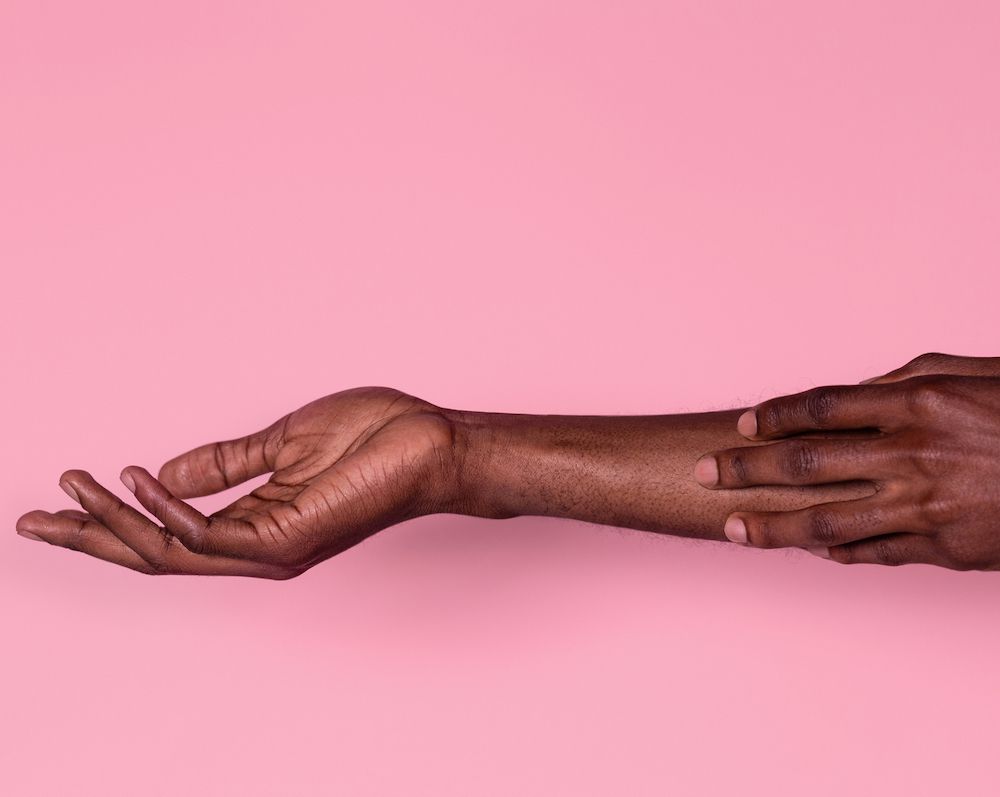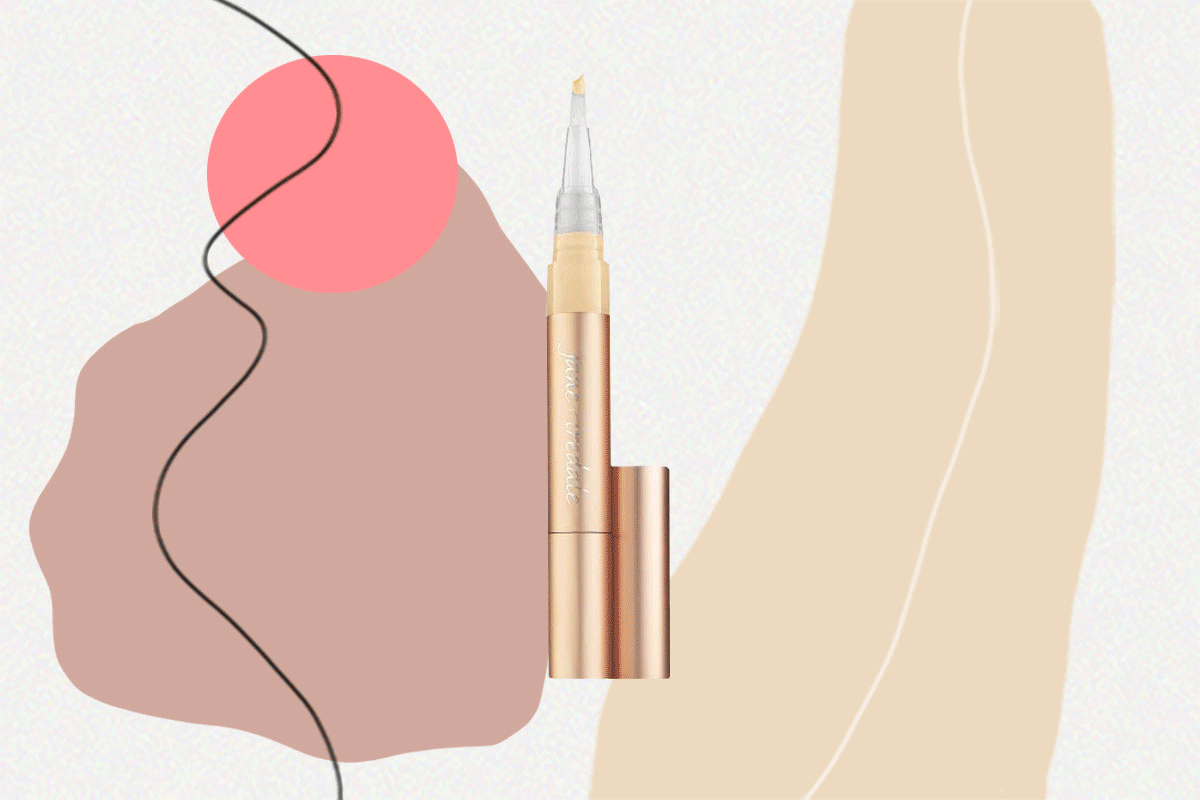How to Tell If Your Skin Picking Habit Is Actually Dermatillomania (And How to Get Help)

Dermatillomania—pr excessive skin picking—is a condition that falls into the category of psychodermatology. Psychodermatology is a broad spectrum of clinical medicine that includes dermatologic conditions that have large psychiatric burdens (acne, hair loss, psoriasis, etc) and psychiatric conditions that present, on first glance, as dermatologic conditions (dermatillomania, body-dysmorphic disorder, etc).
As a board-certified dermatologist, patients often present to me to solve the scars created by dermatillomania, but I almost always refer them to a psychiatry colleague for holistic management of the cause and effects of the disorder. This condition causes significant emotional distress and should be approached with kindness and patience from loved ones and medical professionals. So, to create this all-encompassing guide, I called up (emailed) my psychiatrist friend Vania Manipold, DO to discuss the signs, symptoms, and treatments of this not so uncommon disorder.
Meet the Expert
Vania Manipod, DO is a psychiatrist in private practice in Orange County, CA. She is also a public educator, speaker, and media contributor.
What Is Dermatillomania?
Dermatillomania is a disorder that presents with chronic, compulsive picking of the skin. Individuals may pick at underlying skin conditions – such as acne or eczema. However, many pick at normal skin. With or without an underlying cause, the chronic skin picking creates numerous open wounds into the skin creating the appearance of a “skin disorder.” Those with dermatillomania understand the damage picking does to the skin but have difficulty controlling the behavior.
Most people who deal with dermatillomania also have at least one other psychiatric condition, most commonly obsessive-compulsive disease, chronic anxiety, and/or depression.
In the dermatology world, we typically refer to this condition as neurotic excoriations. The chronic picking of acne lesions is so common it has a specific name: acne excoriee. Dr. Manipod notes that in the psychiatric world it is broadly referred to an excoriation disorder or pathological skin picking.
Signs and Symptoms of Dermatillomania
Not everyone who picks at an acne lesion has dermatillomania. The Diagnostic and Statistical Manual of Mental Disorders (DSM) is the guidebook that almost all mental health professionals use to diagnosis mental health conditions. Dermatillomania is recognized within the most recent DSM–DSM V– as having the following signs and symptoms:
- Recurrent skin picking resulting in lesions: this includes picking at already existent skin lesions, such as acne, but also picking at normal skin to create new lesions.
- Repeated attempts to decrease or stop skin picking: this differentiates dermatillomania from a bad habit. Habits are more easily broken than disorders.
- The skin picking causes clinically significant distress or impairment in social, occupational, or other important areas of functioning: this point should be emphasized. The defining line between a behavior and a mental health disorder is the impact the behavior has on the entirety of the person’s life. This condition typically causes significant distress for both the individual and loved ones. It may also affect their ability to obtain a job and/or start new relationships.
- The skin picking is not attributable to the physiological effects of a substance (ex., cocaine) or another medical condition (ex., scabies).
- The skin picking is not better explained by symptoms of another mental disorder (eg, delusions or tactile hallucinations in a psychotic disorder).
Dermatillomania most often presents during childhood and adolescents, but it can occur later in life. The face is the most common area affected, but other easily reached areas – such as the arms, abdomen, and legs – may also be affected. There will be an absence of picked lesions in the center of the back where the individual cannot reach (although there may be acne or other lesions in the center of the back). The damage caused by picking may lead to bleeding, permanent scarring, and superficial skin infections. The chronic picking also triggers the itch-scratch cycle, a phenomenon where damage to the skin causes itch that is then relieved by picking at the skin; the cycle continues until the picking is stopped.
I just want to take another second to emphasize the importance of kindness and empathy when you see a stranger (or friend!) with a skin disorder; often the problem is much deeper for them than what you see.
Common Causes of Dermatillomania
With the exception of drug-induced cases, the cause of dermatillomania isn’t completely understood. Dr. Manipod notes that the condition likely shares origins to conditions such as compulsive nail-biting and trichotillomania (compulsive pulling out of the hair). All of these disorders are thought to exist on the “spectrum of obsessive-compulsive disorder, considering the overlap of symptoms related to impulse and compulsion.” Dr. Manipod adds that – “from a psychological perspective dermatillomania can be considered a form of avoiding stressful issues and instead releasing the tension and frustration through skin picking.” Like other mental health issues, there does appear to be some genetic predisposition.
Drug-induced dermatillomania is worth mentioning because it is not uncommon. Stimulant medications, such as those used to treat ADHD, and illicit drugs such as cocaine, can trigger dermatillomania. In these cases reduction of the medication dose, switching to a different stimulant, or discontinuing the medication may provide complete symptom relief. However, in some cases, the best option is to manage the side effect of dermatillomania without changes in the stimulant dose.
How Is Dermatillomania Treated?
Because of their shared signs and symptoms, dermatillomania is treated similarly to obsessive compulsive disorder through a combination or psychotherapy and pharmalogic medication. For patients who pick at underlying skin lesions – such as acne excoriee–aggressive treatment of the underlying skin condition may provide significant benefit in addition to or in replace of psychotherapy and pharmacologic therapy.
Psychotherapy structures such as cognitive behavioral therapy, acceptance and commitment therapy, and habit-reversal training are most beneficial, according to Dr. Manipod.
- Cognitive behavioral therapy helps individuals become more mindful and aware of one’s skin-picking behaviors and potential triggers. Triggers may be environmental (eg standing in front of the bathroom mirror), emotional (eg anxiety, frustration), and/or a cognitive distortion (eg needing to pop a pimple in order for skin to look better) that reinforce skin picking. Gaining awareness of these patterns can help someone find ways to tolerate and manage the urges.
- Acceptance and commitment therapy also utilizes techniques that promote awareness of how thoughts and feelings can impact behaviors, but acceptance and commitment attempts to teach a person how to fully experience and engage with their feelings rather than avoiding. This can be helpful for a person with dermatillomania since skin-picking might be a way of experientially avoiding painful emotions.
- Habit reversal therapy is a five part training process that attempts to replace a negative habit with a positive habit through awareness, competing response training, motivation training, relaxation training, final generalization of new skills.
- N-acetylcysteine has shown promising results for the treatment of dermatillomania. Selective serotonin inhibitors may also provide benefit.
The Takeaway
Dermatillomania is a psychological condition that presents with repeated picking of the skin, which creates permanent scarring. The condition is caused by an inability to control picking and may cause significant distress. A combination of addressing underlying causes, psychotherapy, and pharmacologic therapy can be effective in controlling the impulses.
The 12 Acne Patches That Will Actually Do Work on the Stubborn Pimple on Your Chin








